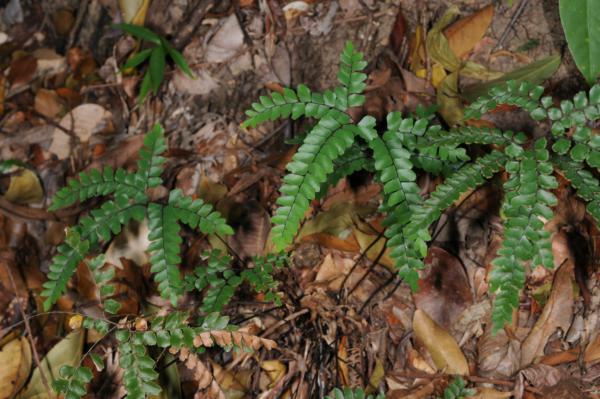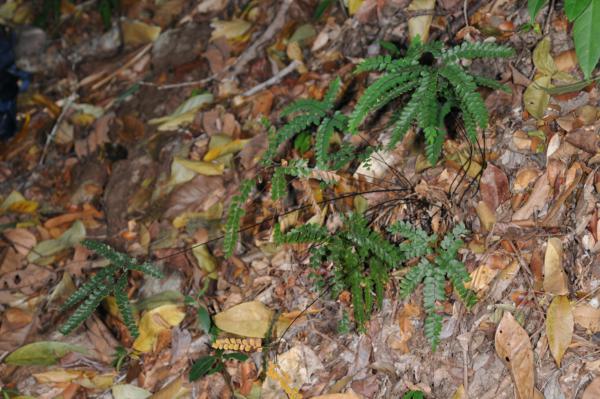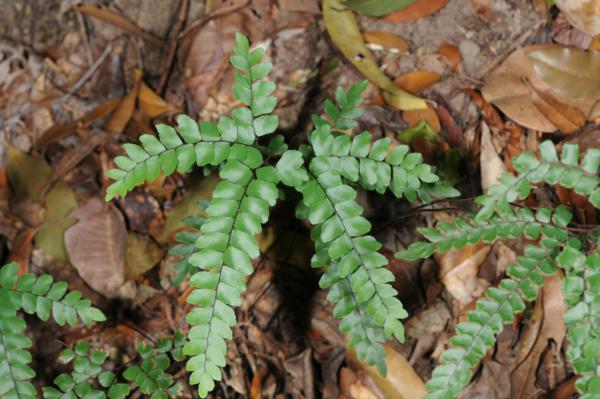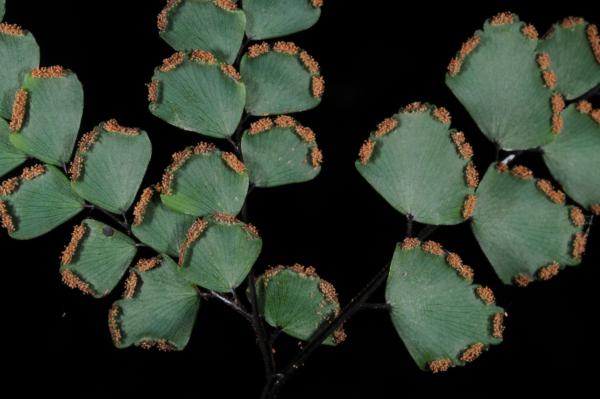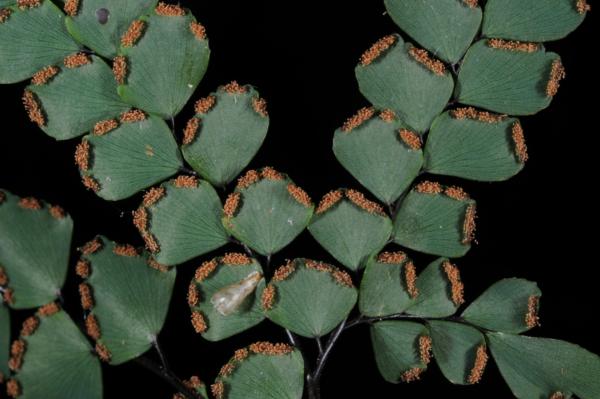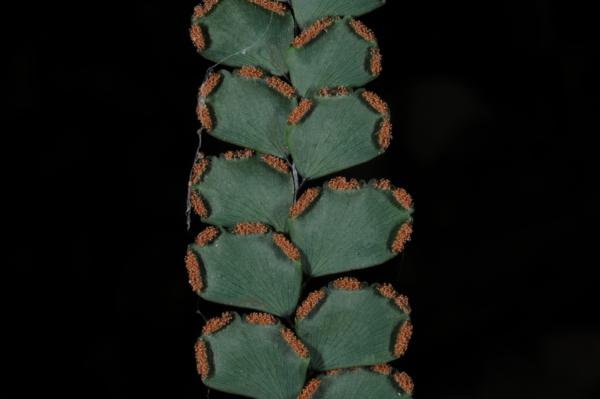
Adiantum flabellulatum L.
Etymology
According to Holttum (1954), the botanical name, Adiantum (unwetted) refers to the way in which water-drops run off the surface of the pinnae without wetting them.
Family
Pteridaceae, subfamily Vittarioideae
Nomenclature
Adiantum flabellulatum L., Sp. Pl. 1095. 1753; Bedd., Handb. Ferns Brit. India: 88. 1883; C.Chr., Bot. Tidsskr. 32: 347. 1916; Tardieu & C.Chr., Fl. Indo-Chine 7(2): 186. 1940; Holttum, Rev. Fl. Malaya ed. 1, 2: 603, f. 354. 1955 [‘1954’]; Ching, Acta Phytotax. Sin. 6: 326. 1957; Tagawa & K.Iwats., Fl. Thailand 3: 215. 1985; Boonkerd & Pollawatn, Pterid. Thailand: 118. 2000.
Adiantum bonii Christ, J. Bot. 8: 150. 1894; Bot. Tidsskr. 24: 106. 1901, p.p.
Adiantum diaphanum auct. non Blume: Newman et al., Checkl. Vasc. Pl. Lao PDR: 31. 2007.
Description
Terrestrial or lithophytic. Rhizome short, erect or ascending, or rarely creeping, bearing a dense tuft of fronds, covered with scales; scales linear, a little broader at basal portion, entire, 4–8 mm long, shining brown, concolorous. Stipes distinctly grooved on upper surface, bright reddish brown, blackish brown or nearly black, scales on basal portion, hairy in grooves and glabrous elsewhere, 10–39 cm long, but sometimes up to 50 cm. Laminae pedate or tripinnate with a few pairs of bipinnate pinnae, up to 21 by 27 cm; upper pinnae and pinnules of the large pinnae similar, pinnate with more than 10 pairs of leaflets, linear, about 10 by 2 cm; rachis (of fronds, of pinnae and of pinnules of larger pinnae) like the upper part of stipe, distinctly grooved on upper surface, grooves decurrent to those of stipe, densely pubescent; leaflets fan-shaped, distinctly stalked with stalks densely hairy on upper surface; two basal edges forming broad, cuneate base, up to 1.5 by 1.3 cm; distal margin round, serrate, rarely lobed, thin but firm, surfaces quite glabrous; veins not raised. Sori round to elongate , up to 5 mm long, a few to each leaflet.
Distribution in Thailand
NORTHERN: Chiang Mai, Phitsanulok; NORTH-EASTERN: Loei; EASTERN: Chaiyaphum; SOUTH-WESTERN: Phetchaburi, Prachuap Khiri Khan; SOUTH-EASTERN: Trat; PENINSULAR: Chumphon.
Distribution in Laos
Khammouane.
Distribution in Cambodia
"Tamine"
Wider Distribution
India, Burma, SW and S China, Vietnam, Taiwan, throughout Malesia, and northwards to southern edge of Japan.
Ecology
On humus-rich ground in rather open forests at medium altitudes.
Proposed IUCN Conservation Assessment
Least Concern (LC). This species is widespread and not under any known threats.
Voucher specimens - Laos
M.F. Newman LAO 866, Khammouane, Nam Theun (E).
Habit
Habit
Habit
Pinnae with mature sori
Pinnae with mature sori
Pinnae and sori
Site hosted by the Royal Botanic Garden Edinburgh. Content managed by Stuart Lindsay, Gardens by the Bay, Singapore and David Middleton, Singapore Botanic Gardens. Last updated 24 January 2012
